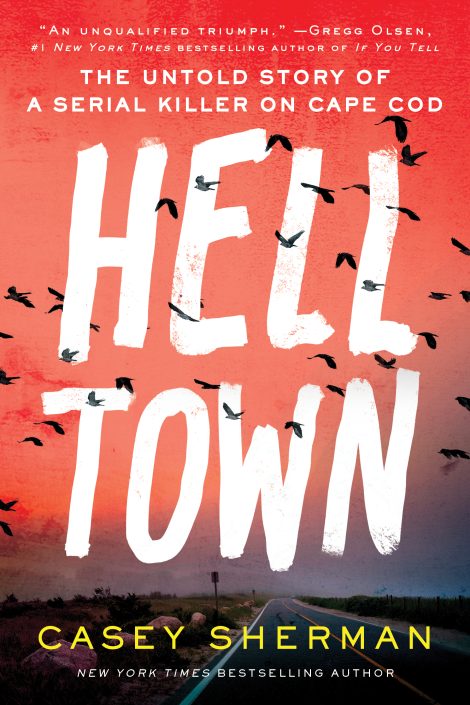
HELLTOWN
The Untold Story of a Serial Killer on Cape Cod
Before Charles Manson, there was Tony Costa–the serial killer of Cape Cod
1969: The hippie scene is vibrant in Provincetown, Massachusetts. Long-haired teenagers roam the streets, strumming guitars and preaching about peace and love… and Tony Costa is at the center of it all. To a certain group of smitten young women, he is known as Sire—the leader of their counter-culture movement, the charming man who speaks eloquently and hands out hallucinogenic drugs like candy. But beneath his benign persona lies a twisted and uncontrollable rage that threatens to break loose at any moment. Tony Costa is the most dangerous man on Cape Cod,
Before Charles Manson, there was Tony Costa–the serial killer of Cape Cod
1969: The hippie scene is vibrant in Provincetown, Massachusetts. Long-haired teenagers roam the streets, strumming guitars and preaching about peace and love… and Tony Costa is at the center of it all. To a certain group of smitten young women, he is known as Sire—the leader of their counter-culture movement, the charming man who speaks eloquently and hands out hallucinogenic drugs like candy. But beneath his benign persona lies a twisted and uncontrollable rage that threatens to break loose at any moment. Tony Costa is the most dangerous man on Cape Cod, and no one who crosses his path is safe.
When young women begin to disappear, Costa’s natural charisma and good looks initially protect him from suspicion. But as the bodies are discovered, the police close in on him as the key suspect. Meanwhile, local writers Kurt Vonnegut and Norman Mailer are locked in a desperate race to secure their legacies as great literary icons—and they both set their sights on Tony Costa and the drug-soaked hippie culture that he embodies as their next promising subject, launching independent investigations that stoke the competitive fires between two of the greatest American writers.
Immersive, unflinching, and shocking, Helltown reveals the secrets of a notorious serial killer and unspools the threads connecting Costa, Vonnegut, and Mailer in the seaside city that played host to horrors unlike any ever seen before.
- Sourcebooks
- Paperback
- May 2023
- 528 Pages
- 9781728271934
About Casey Sherman
 CASEY SHERMAN is an American author, journalist, and screenwriter. Several of his books have been made into major motion pictures or are in development.
CASEY SHERMAN is an American author, journalist, and screenwriter. Several of his books have been made into major motion pictures or are in development.
Praise
“Utterly absorbing… Destined to be on all the year-end best nonfiction lists!” —Gregg Olsen, #1 New York Times bestselling author of If You Tell
“Casey Sherman is a master at bringing history alive. Compelling, complex, and revealing—do not miss this!” —Hank Phillippi Ryan, USA Today bestselling author of Her Perfect Life
Discussion Questions
1. How did the hippie culture of the late ‘60s disguise disappearances? Why didn’t police prioritize disappearances like Sydney Monzon’s?
2. What drew Tony Costa’s “disciples” to him? Did anyone take their defense of him seriously?
3. Costa was not particularly neat about his crimes, so why did it take so long for him to be apprehended? Why did he volunteer to speak to police after successfully disappearing?
4. Mailer questioned whether he would be capable of a crime like Costa’s. What comparisons can you make between Vonnegut’s, Mailer’s, and Costa’s erratic behavior? Do you think there is a significant difference between the three men?
5. The police were determined to pin Costa with Mary Anna and Pat’s murders, even when they’d only found a third, unrelated corpse. How did that change the way they investigated? What do you think of that approach more generally?
6. Why does Costa view Cory Devereaux as his rival? What does Devereaux think of Costa?
7. What was District Attorney Ed Dinis’s motivation for taking on Tony Costa’s prosecution? Why did he exaggerate the already extensive mutilation of the girls’ bodies? Did he ultimately succeed in his goal?
8. Why were writers like Evelyn Lawson convinced that witchcraft was involved in the Truro murders? What appeal did that explanation have for people like Norman Mailer?
9. Dinis chose not to prosecute all four murders, sticking with Pat Walsh and Mary Ann Wysocki’s deaths which he called “slam dunks”. Why did he make that decision? Do you think justice is better served by a trial for all crimes that ends without a conviction or a trial for some crimes that results in a sentence?
10. During the trial, Costa’s lawyers assert that his drug use is to blame for his transgressions. How does that reflect the general attitude towards drugs at the time? Do you think his defense would use that tactic if he were on trial today?
